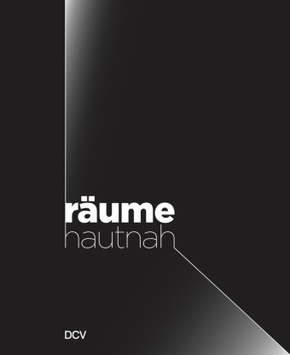| Verlag | DCV Dr. Cantzsche |
| Auflage | 2024 |
| Seiten | 188 |
| Format | 10,0 x 1,0 x 10,0 cm |
| Gewicht | 473 g |
| ISBN-10 | 3969121841 |
| ISBN-13 | 9783969121849 |
| Bestell-Nr | 96912184A |
Wir leben in Räumen, die wir nach unseren Vorstellungen formen. Unser Alltag hinterlässt dabei Spuren, die von unseren Gewohnheiten erzählen. Räume versprechen Schutz und Verortung, können aber auch das Gefühl der Enge hervorrufen. Wir verwachsen mit Räumen - sie wiederum werden zum Abdruck unserer Persönlichkeit. Umgekehrt gestalten Räume je nach Bauweise und Standort unser Dasein. RÄUME HAUTNAH versammelt künstlerische Positionen, die die Sphären von Mensch und Raum nicht unabhängig voneinander betrachten, sondern in komplexen Verflechtungsprozessen begreifen: als leibliche Erfahrung, emotionale Abhängigkeit oder instinktives Bedürfnis nach Schutz. Olesja Nein, die Kuratorin dieses Projekts, führt mit ihrem Katalogbeitrag in die Ausstellung ein und erläutert als Rundgang in Textform jede dieser künstlerischen Positionen näher, beschreibt den jeweiligen Wirkungsraum und gibt hilfreiche Informationen an die Hand. Philipp Zitzlsperger wiederum greift den in der Ausstellung wichtige n Aspekt des Abdrucks als auratisches künstlerisches Verfahren auf und erläutert dessen Herkunft und Bedeutung im Rückgriff auf die Vormoderne.Künstler_innen: Absalon, Shannon Bool, Heidi Bucher, Eileen Gray, Do Ho Suh, Mary Mattingly, Tracey Snelling, Francesca Woodman
We live in spaces that we shape in accordance with our own ideas. Our everyday lives leave traces in them that speak to our habits. Spaces promise shelter and belonging, but they can also instill a sense of constraint. We grow into the spaces we inhabit-and they in turn become expressions of our personalities. Conversely, spaces, depending on their architecture and location, inform our existence. RÄUME HAUTNAH gathers works of art that, rather than conceiving of the human sphere and the spatial domain as separate, comprehend them in their complex entanglements: in bodily experience, emotional dependency, or the instinctive need for protection. An essay by Olesja Nein, the project's curator, offers an introduction to the exhibition and takes the reader on a tour, describing each artist's space of activity and supplying helpful information. Philipp Zitzlsperger, meanwhile, zooms in on a key aspect of the art in the exhibition, the imprint as an artistic technique with a distinctive aura, and illuminates its origins and significance since the dawn of modernism.Artists: Absalon, Shannon Bool, Heidi Bucher, Eileen Gray, Do Ho Suh, Mary Mattingly, Tracey Snelling, Francesca Woodman

